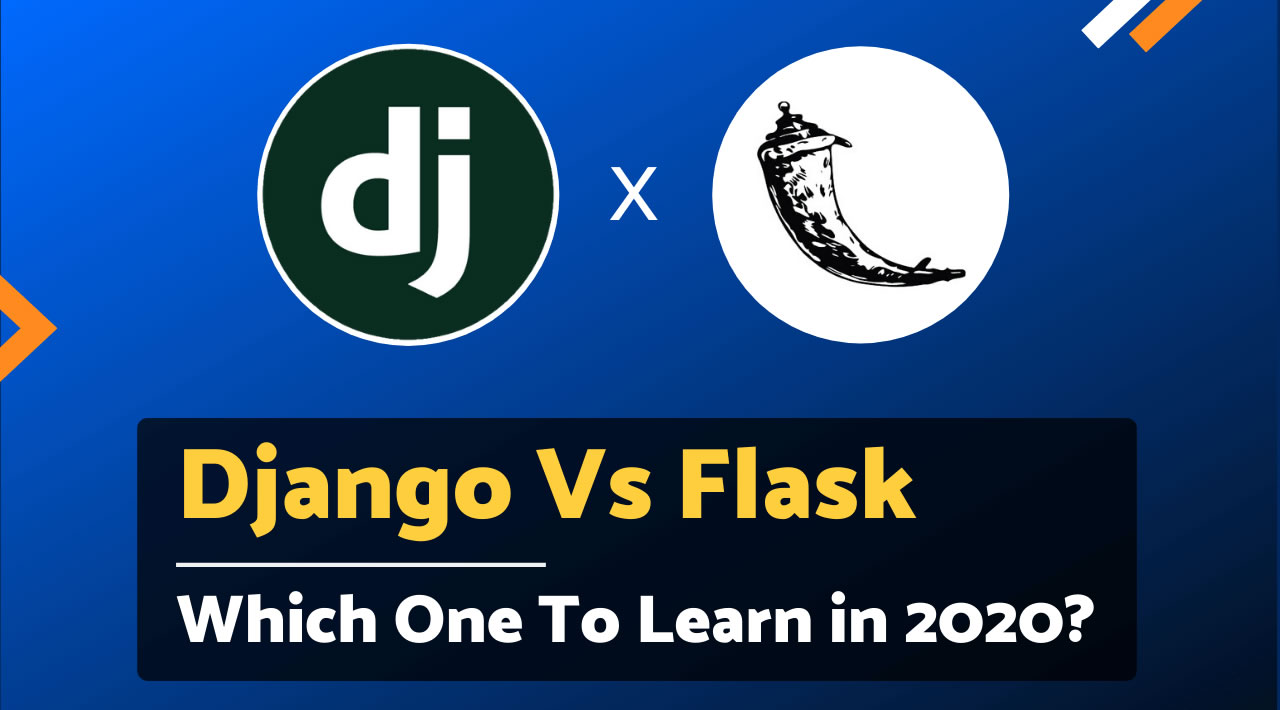With the steady growth of Python in 2018 and 2019, the complete eco-system revolving around Python has grown pretty well, same followed with its web application framework Django and Flask. Many Python-based web frameworks enable programmers to construct scalable software quickly. From simple to complicated sites, these frameworks can do everything. Out of the numerous popular options, Django and Flask would be the most talked-about and mainly since both are comparable in specific ways and different in many different ways! This contributes to a contrast between the two. While every one of those web development frameworks has its particular attributes, there are lots of factors you need to have a look at before choosing one to its applications.
Django, on the one hand, is a full-stack web framework, whereas Flask is a lightweight, flexible framework. If you are a beginner and would like to dig into basics and also learn core theories, Flask makes it possible to understand how each element from the backend works to acquire a straightforward web application ready to go. Django follows a lot of layout patterns, and so you know a whole lot of new theories. Further, with the two frameworks, there’s a great deal of community support and documentation, so should you ever encounter any issues, the odds are that the issues have already been discussed and sorted out – something which makes your job easier. Django has existed since 2005; Flask maintained its foot in 2010 – about five years later. Their rising popularity is evident, thinking about the number of questions folks ask about these two frameworks in various technology forums. You can work on some of those frameworks in case you’ve got a working understanding of Python. For your benefit, we’ve given a simple summary of the two Django and Flask, so you can understand the differences and use them in a better way.
Django
Django is a web application framework that manages lots of standard functionalities to construct secure and maintainable sites. Django is free, open-source, and has a very active and helpful community service with plenty of documentation. With Django, you receive the majority of the items ‘out-of-the-box’ as just one product.
Characteristics of Django
- It’s a versatile framework and can be used for almost any site (social media, news website, content management, and much more) with articles in any format such as HTML, XML, JSON, and much more. It works in conjunction with any client-side frame.
- With regular updates, Django has evolved as one of the most secure framework to use. Django manages standard security features like user accounts management, trade management, cross-site ask forgery, clickjacking, and much more.
- It’s scalable and maintainable. Django follows layout patterns and principles to reuse and take care of the code. The primary principle of ‘Don’t Repeat Yourself’ guarantees there are no duplications. Because Django is a component-based framework, every layer is different from another, making the program scalable at any given level.
- It’s written in Python, the most popular programming language which could run anywhere, which makes Django portable and use to use irrespective of the operating system.
Flask
Flask is a lightweight framework, popularly categorized as a micro-framework. Flask comes with a few standard functionalities and enables programmers to bring numerous plugins or libraries to get an extension. In case you’ve got a comfortable, innovative use situation to be added into a present program, Flask should be your choice because it provides flexibility. Flask has a small pair of simple to understand API, and the documentation is superb. If you’re new to Python, start your web development with Flask, so you can find the sense of backend-frontend and understand the core concepts nicely.
Characteristics of Flask
- Provides one (programmer) that the complete management of choices to construct the application through the development (execution ) stage.
- Includes an integrated development server and speedy debugger
- Coherent and neat API
- Easy and flexible settings
- RESTful and HTTP request managing
- Integrated Unit testing service
- Flask includes two chief dependencies — Werkzeug and Jinja2 that offer powerful WSGI templates and support, respectively.
Well, by now, you have a better idea about both of them – while Django is a full-scale framework with plenty of functionalities already done for you, Flask leaves everything under your control. If you look from the developer’s perspective, both have their advantages.
Many developers have one common question — which frame is better? You might’ve got a fair idea by now of how each framework is different and what are the most effective ways to utilize each of them. That said, there are many high traffic websites built on Flask as well, which function well and are similar to those constructed on Django. Or you could master one and then change when your job requires you to, rather than needing to learn everything at once.
Together with Flask, you can start with some necessary programming abilities, but Django requires some prior homework that you compose even a Hello World program. Start your Django trip with this project-based tutorial on unwired learning.
In conclusion, both Django and Flask are enjoyable to work with, with both giving you lots of new things to learn.
Django Vs Flask | Django Vs Flask: Which is better for your Web Application? | Edureka
Django vs Flask | Difference between Django and Flask | Intellipaat
Flask v Django: Barebones to Production - Python Web Framework Code Showdown - Heroku
#django #flask #python #web-development
